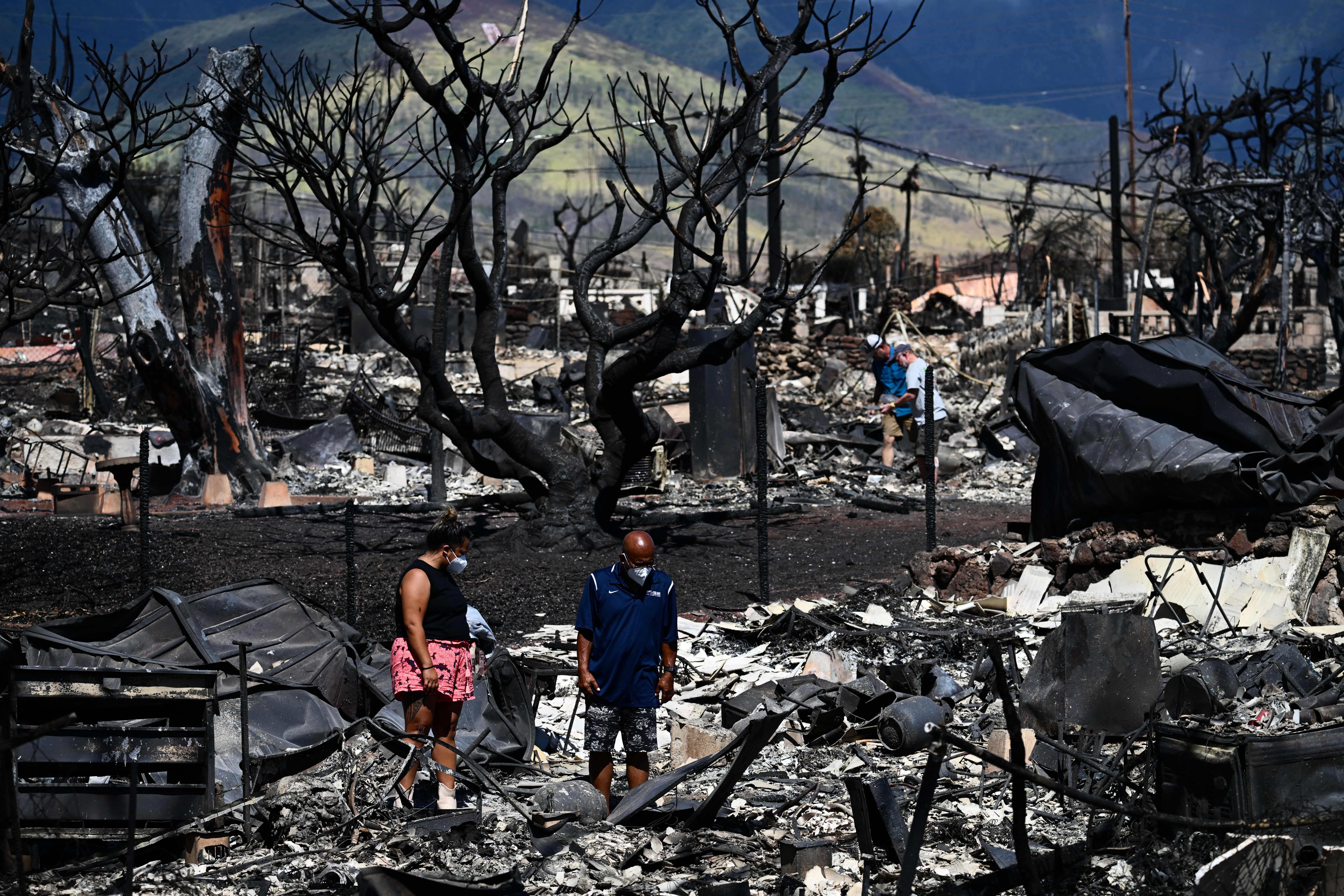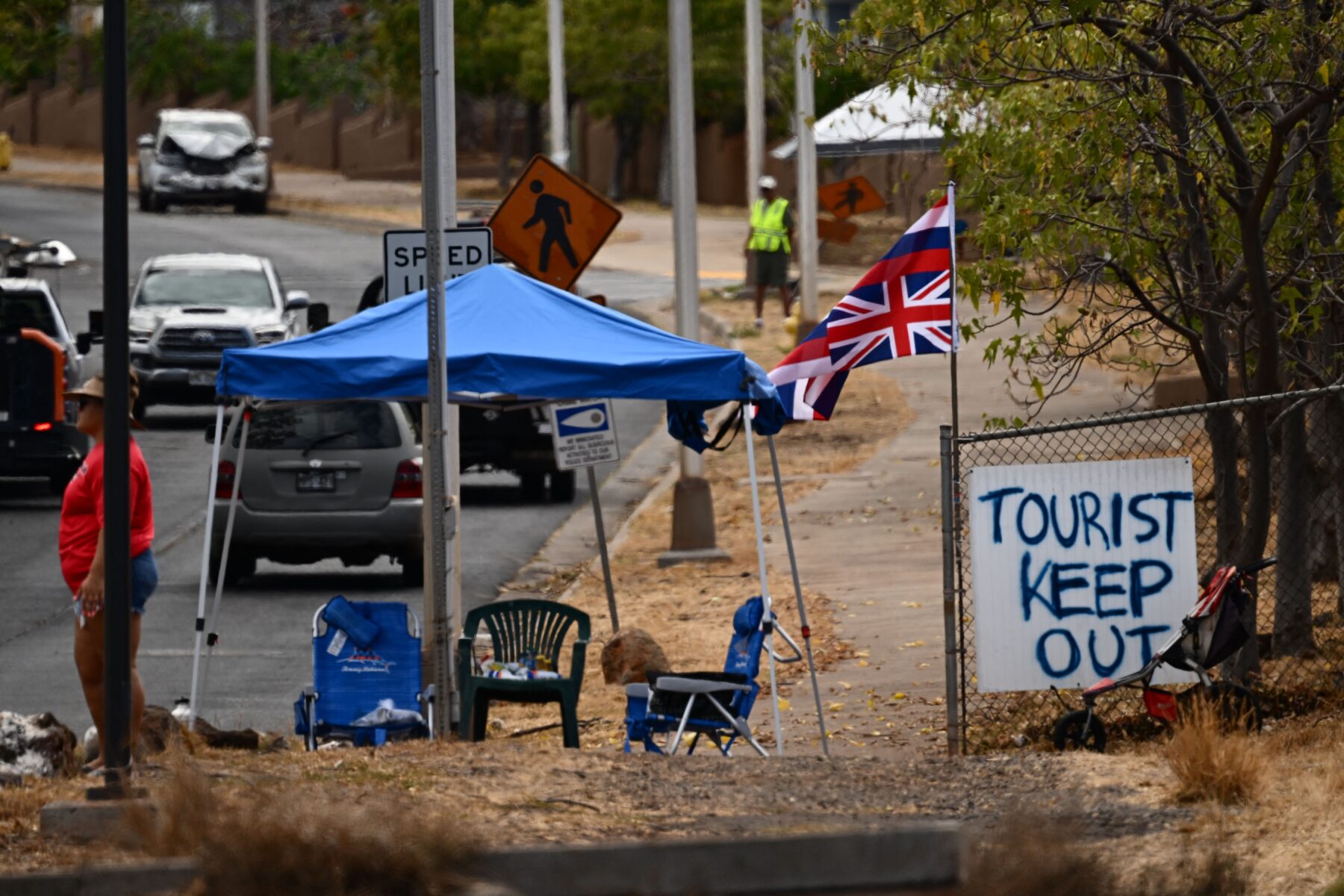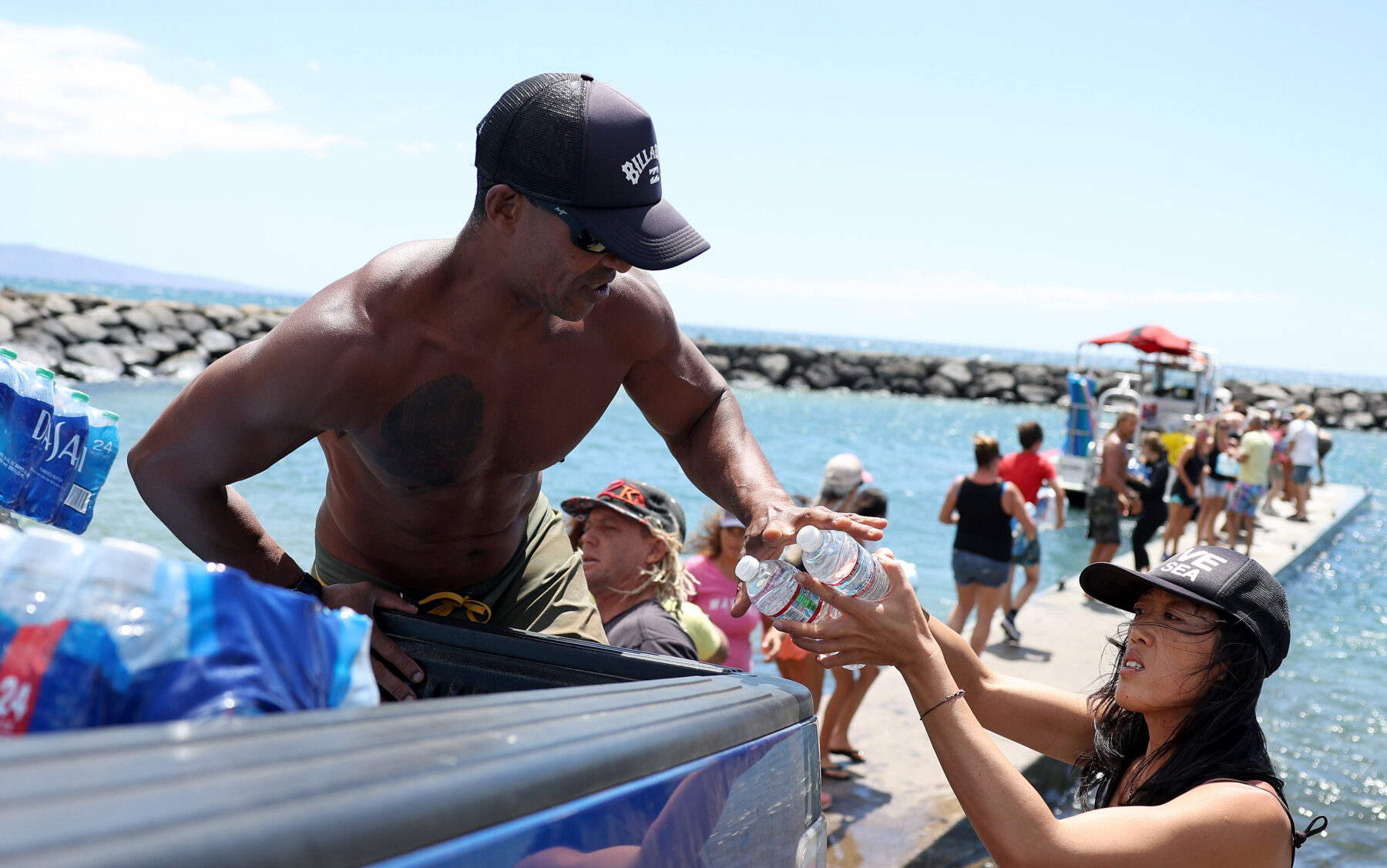
The photos of Lāhainā are devastating. The blazing-red sky reflected in a calming ocean. Residents sifting through ash and rubble, with burned-out cars and warped appliances, the only recognizable objects around them. A sprawling 150-year-old banyan tree at the center of the Maui town, charred but still trying to hold on.
While imagery of destruction is important to journalists telling the story of one of the deadliest wildfires in U.S. history, so is parsing the more complicated details as the days go on: how this happened, how communities are coping and what will be the path forward. These stories are not quick hits. They will take time, digging and gaining the trust of the people in these communities who have been impacted by such catastrophic events.
“It’s not just about extracting a quote,” said NBC News enterprise reporter Jon Schuppe, who is reporting from Maui. “Take your time, listen to their stories, and try to be open to understanding what their experiences are like.”
Journalists need to stick with calamities like Maui long after the news has moved on to another Trump indictment or TikTok controversy. They need to keep talking to survivors as they continue to grieve, regroup and rebuild a community that will never be the same. Here are follow-up coverage areas to consider in the aftermath of such travesties.
Accountability
“How” is one of the fundamental pillars of news reporting. Audiences and residents want to know how these wildfires, in a place that has seen few wildfires, happened. The answer to any catastrophe usually isn’t simple but a confluence of factors. Initial reports often cover the basics of what is known — in the case of the Maui wildfires, high winds from an offshore hurricane coupled with dry, easy-to-scorch land — but follow-ups should dig deeper: How did those conditions come to be?
Let’s start with the dry land. Maui was experiencing a severe drought in an abnormally short amount of time, but it’s not enough to leave the reporting at a lack of rain, especially when the human effects on extreme weather and a warming planet are scientific facts. As Carolyn Kormann wrote for The New Yorker, these dry conditions in Lāhainā go back hundreds of years, when “colonizers razed native forests to make room for sugarcane, pineapple, and cattle.” Lāhainā was essentially a pond collecting rainwater from the mountains, but once foreigners arrived, “water from the mountains flowed into concrete irrigation ditches, instead of natural streams and aquifers,” she wrote. “The pond was paved over for a parking lot.”
Desecration of the land provides vital context to explaining the “how” of the wildfires. For instance, foreigners also brought over invasive species, including grass. By talking to agriculture experts and fire scientists, journalists have reported that this invasive grass also made the island easier to burn. A reporter’s job is to keep asking questions: Were state officials aware this grass could cause problems? As NBC News science reporter Evan Bush reported, wildfire experts had urged the state for years to take safety measures against the flammable nonnative grasses to no avail.

Holding power to account is also verifying what officials say against the people who lived it. Talking to survivors, reporters quickly learned Lāhainā residents hadn’t heard warning sirens when the fires broke out, which led to reporting on the failure of the Maui Emergency Management Agency to sound those alarms, and ultimately the resignation of the island’s top emergency management official.
A journalist should never take for granted any information, by officials or otherwise. Be skeptical. Verify what people say. This advice can be applied to any story or tragedy, not just natural disasters: police killings, mass shootings and many other forms of violence and crime.
Emergency relief
In disaster situations where the death toll is still rising and damage is still being calculated, relief efforts are rarely smooth. It’s important for reporters to be on the ground and talk to survivors about what they need, what they’re getting and from whom. It’s a reporting process that takes patience, sensitivity and trauma-informed reporting, which emphasizes empathy and dignity for survivors.
Schuppe said his plan when he arrived in Maui was to talk to residents and tell their stories. He was connected with local journalist Carrie Ching, who introduced him to community organizer Tiare Lawrence, who was leading efforts to get food and supplies to Lāhainā residents. “We didn’t even take out our camera or notebooks for most of that first meeting because our approach was to go deeper than, ‘Tell me what happened to you and I’m going to file it for a blog post,’” Schuppe said. Instead, he and his colleague just listened, human to human, to Lawrence tell a story about her cousin who had lost his home. “Don’t act as if you’re extracting something from somebody, just listen to them,” he said.
From Lawrence, Schuppe was connected to others with similar stories about how they hadn’t received any help from the Federal Emergency Management Agency. The end result was a nuanced story about the wildfires being part of a larger pattern of the U.S. government failing Native Hawaiians, who are often left to take care of themselves.
“It is rooted in a long history of distrust,” he said, ”but there’s also a really strong feeling that Native Hawaiians have about protecting each other and the land and making sure they’re not going to be taken advantage of.”
It’s a story that could have been missed without patience and face time with those affected. It’s also a story of accountability, with reporting comparing what is happening on the ground to what officials say is happening, or what is typically done in a disaster.
Recovery
Recovery is not just what happens in the days and weeks after a tragedy; it’s the months and years after. Rebuilding Lāhainā will not be quick or easy. Reporters shouldn’t just leave in the coming days, only to return on an “anniversary” (it’s preferable to use “commemorations,” as anniversaries often indicate celebration).
In fact, there are already recovery narratives to follow, such as developers contacting residents whose homes were destroyed, and what it’s like for residents to return to work in the tourist industry instead of helping their community.

In these moments of uncertainty, talk to locals and Native Hawaiians about how they’d like to see Lāhainā rebuilt — as a tourist destination, or a neighborhood that invests in agriculture and cultural preservation? Dig into the dichotomy of residents having to live in an economy dependent on tourism and how that industry has made it too expensive for locals to get by.
There will ultimately come a time for reporters to work on other stories, but they can still keep in contact with the sources they’ve made in Maui. Check in on them, follow local news developments and stay up to date with community groups on social media. There are more stories to be told.
Historical and socioeconomic context
When reporting on natural disasters, it’s important to contextualize what was lost with what was once there. What were the economics, the social issues, the infrastructure, the government like before all this happened, and how vulnerable were these communities to disaster?
In an NBC News story about how Native Hawaiian survivors were treated differently than wealthy tourists fleeing Maui, reporters Kimmy Yam and Sakshi Venkatraman contextualized how dire things have become for Hawaiians leading up to this moment:
According to a 2022 report on financial insecurity in Hawaii, 27% of Native Hawaiians were considered “asset limited, income constrained, employed,” surviving below the basic cost of living in the state. The racial group also has the highest levels of poverty in the state, across all major ethnicities, and are twice as likely to become homeless.
Some of the neighborhoods hit hardest were ones that housed primarily working-class families, who have long lived in Lahaina and will have to face down both potential displacement from the town forever and anguish from losing their loved ones, Phillips, 47, said.
“For AANHPIs in general, there is this habit that the mainstream media has to only cover our communities in tragedy, and so there’s very little background or understanding of what’s going on in our day-to-day,” said Yam. “What do these communities look like outside of a giant disaster like this?”
Yam said if you’re listening to people when they’re talking, you’ll find those context clues that you need to dig into more — tourism, colonialism — because it’s clearly “a very critical part of the story.”
When Schuppe was reporting his story on aid, it was a collaborative effort. He noticed the patterns of historical distrust, filing quotes and passages to his colleague Corky Siemaszko, who did the research on Hawai’i’s history and threaded it throughout the article.
“It goes back to this idea of going beyond extracting information,” Schuppe said. “It’s trying to be empathetic and understanding where they’re coming from in the context in which they’re talking about it.”
Ultimately, reporters should think like toddlers when following up on a story: Ask “But why? But why? But why?” until the full story is told — and then revisit again and again.
Coverage Guidance from ʻAhahui Haku Moʻolelo (Hawaiian Journalists Association) and the Hawaiʻi chapter of the Asian American Journalists Association
• Please use the term “Hawaiʻi residents” to refer to people who live in Hawaiʻi. The term “Hawaiian” should only be used to refer to the islands’ Indigenous people.
• Hawaiians write the name of their land as Hawaiʻi, while AP Style uses Hawaii. If you do choose to use Hawaiian diacritical marks, use them consistently. ʻOkina are glottal stops and look like backwards apostrophes. Kahakō, such as in “Lāhainā,” lengthen and add stress to marked vowels.
• Consider additional historical context when describing Lāhainā. The town is not only a tourist destination but also the former capital of the Hawaiian Kingdom.
• We understand the importance of getting reporters on the ground in the wake of this disaster, but please consider the impact of your stay, and the need to prioritize the flow of limited resources to survivors, first responders, and emergency workers.
• Familiarize yourself with Hawaiʻi’s geography before covering the islands. The Big Island refers to Hawaiʻi Island, the largest island in the Hawaiian archipelago. It does not refer to Oʻahu, the most populated island.
• In Hawaiʻi, the Continental U.S. is often referred to casually as the “Mainland.” Some kama‘āina (people born in Hawaiʻi) feel this term suggests a Hawaiʻi subservience to the 49 American states. Consider using “Continental U.S.” instead of “Mainland.”



